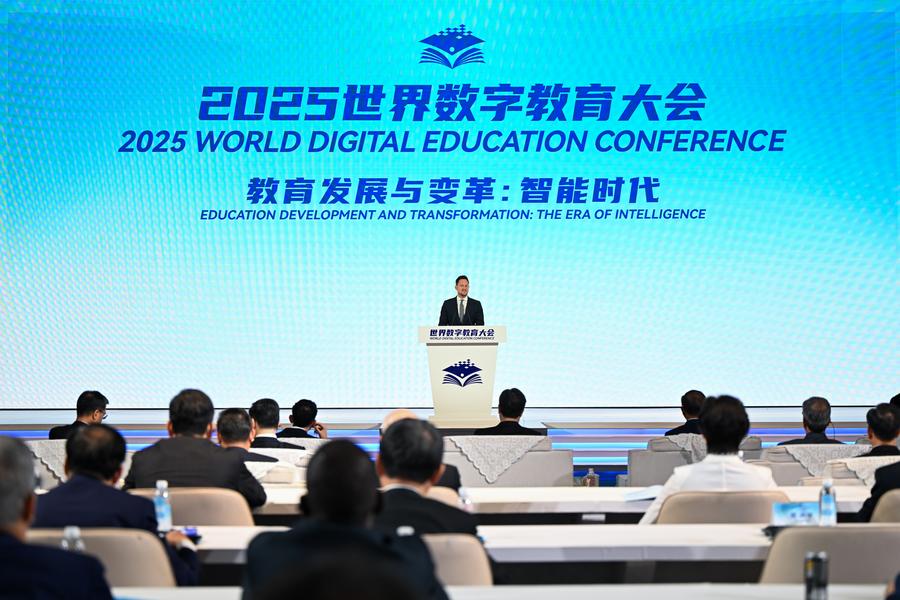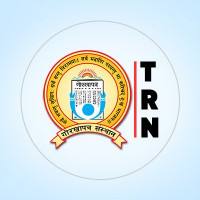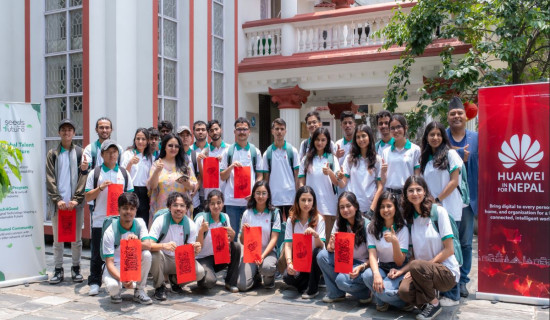- Wednesday, 2 July 2025
World Digital Education Conference spotlights AI-empowered classrooms
WUHAN, May 17 (Xinhua) -- Equipped with VR headsets, a group of fifth and sixth-grade students stepped from their classroom into what felt like another world -- the rugged, dusty terrain of Mars.
The immersive experience was part of a hands-on class, held at Shenlong Primary School's Hupan Campus in Wuhan, central China's Hubei Province. The class focused on designing and building Mars rescue vehicles using AI tools and simulating rescue missions.
Some students used AI software to design the appearance of rescue vehicles, while others employed 3D printing technology to create customized vehicle logos. The innovative class attracted considerable attention from visitors.
"This is what we call the 'classroom of the future,' empowered by AI," said Han Jin, principal of the Shenlong Primary School Education Group.
The event is part of the 2025 World Digital Education Conference, themed "Education Development and Transformation: The Era of Intelligence," held in Wuhan this week.
During the conference, government officials, leaders of international organizations, educators from various levels, and scholars from home and abroad visited primary schools, vocational colleges, universities, and lifelong learning institutions across Wuhan came to witness the impact digitalization is having on China's education system.
"Exposing students to science and technology from an early age greatly benefits the development of innovative thinking. Shenlong Primary School's dedication to digital education exemplifies China's national push for educational modernization," Athanasius Chan, principal of Saint Paul School in Macao, said after the visit.
It's not just young students that enjoy these benefits. In a drone simulation class at Hubei Open University in Wuhan, a dozen senior learners practiced maneuvering unmanned aerial vehicles. Onscreen, their drones soared into the sky and scanned the golden wheat fields lining both sides of a virtual country road.
"Digital technology helps us bridge the digital divide," said 61-year-old Shi Li, a participant in the course. "It has made a real difference in our lives."
Jalal Khan, a Pakistani education consulting manager who has helped Pakistani students study in China for over eight years, has for the first time visited a university for senior learners.
"It was beyond my imagination," he said. "The technology level at Hubei Open University is very high. Students regardless of age and location can share equal education opportunities. The world needs this kind of technology and these teaching methods."
At the digital education conference, the White Paper on Smart Education was released in Wuhan on Friday, alongside the official launch of China's National Strategic Action on Digital Education 2.0.
The white paper emphasized that 2025 marks the inaugural year of smart education. Al is comprehensively transforming educational content, governance, paradigms and teaching methodologies, creating a historic opportunity to establish a future-oriented education system and realize intelligent education.
According to Tian Zuyin, director-general of the Department of Basic Education at China's Ministry of Education, China has built the world's largest digital education platform for basic education -- Smart Education of China platform for primary and secondary schools -- offering over 110,000 high-quality resources across all subjects and grade levels, inside and outside the classroom.
The platform now features a dedicated "AI Education" section, where intelligent tools such as DeepSeek are being deployed. Full-scale pilot programs have been launched in nine provinces. To date, the platform has 160 million registered users and averages 50 million visits per day.
Across China, regions are embracing digital education through a range of innovative approaches. As China's first pilot province for education informatization reform, Hubei has taken the lead in rolling out its smart education platform. Since its launch, the platform has served more than 11 million teachers and students.
In Shanghai, basic AI courses have been introduced as standalone subjects for fourth and seventh graders, with one session per week to ensure consistency and facilitate implementation. At the high school level, students can access specialized AI resources and take elective courses to deepen their understanding.
Meanwhile, the port city of Quanzhou in Fujian Province has leveraged digital tools to bridge the urban-rural education gap by enabling the sharing of top teaching resources across regions. Since 2021, top teachers have been paired with rural schools to deliver real-time, synchronized lessons. The initiative has reached all counties and districts, delivering 39,000 classes and benefiting nearly 253,000 teachers and students.
While AI is fueling exciting changes in education, it's also something of a double-edged sword -- a topic drawing keen attention from both Chinese and international experts.
"Integrating AI into education poses threats as well as opportunities," said Maxim Nachinov, a Russian journalist. "On one hand, controlling the progress of students and their academic honesty is becoming more and more difficult. On the other hand, AI can be an invaluable source of information and even inspiration for new generations of researchers and students."
His concerns were echoed by Tian, who emphasized China is committed to safeguarding educational integrity in the AI era. To that end, the country is working to build a secure and ethical framework for AI in education -- preventing information misuse, ensuring algorithm transparency, and always prioritizing human-centered development.
"The transformation brought by digital education will be exponential," Tian added. "We should move forward with courage and innovation, and together, build a smarter, more inclusive, and better future for youth around the world."







copy-square-thumb.jpg)







